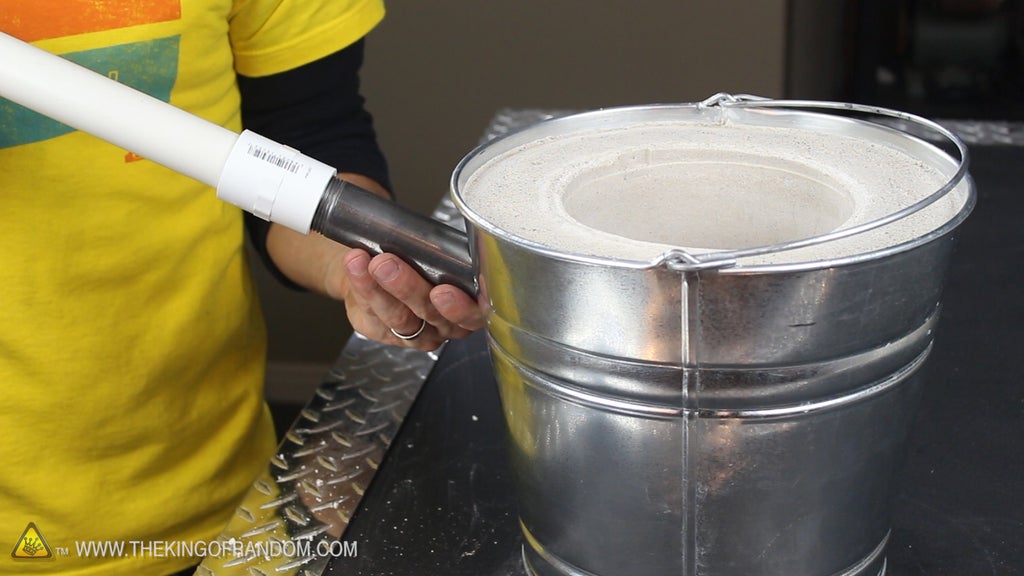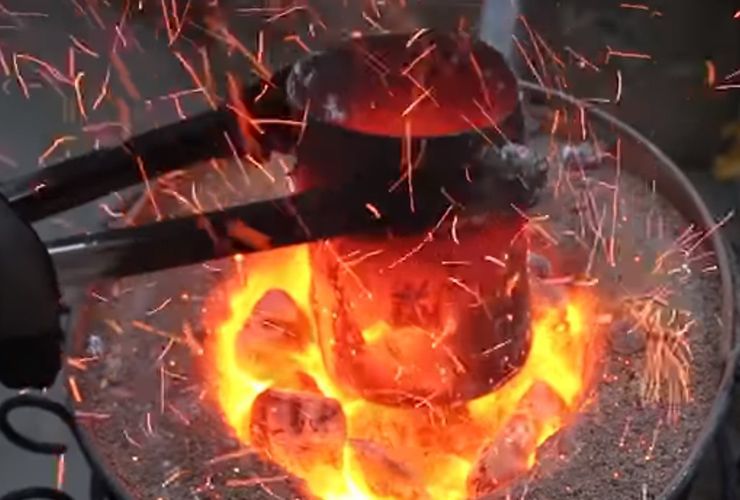Main contrasts between Metal Casting and other metal fabrication techniques
Discover the Ingenious Strategies Used in a Metal Foundry for Superior Casting Results
In today's competitive manufacturing landscape, metal foundries are increasingly adopting ingenious techniques to enhance casting results - Metal Casting. Advanced computer system simulations enable exact modeling of liquified metal behavior, while 3D printing enables fast manufacturing of complicated mold and mildews. Additionally, environment-friendly products and automation streamline procedures. These advancements promise substantial renovations in effectiveness and top quality control. The influence of these modern technologies on sustainability and production practices remains to be totally discovered.
Advanced Computer System Simulations in Metal Casting
Advanced computer system simulations have transformed the metal casting procedure by improving precision and performance. These innovative devices enable designers to develop virtual designs of actors components, enabling them to anticipate the actions and analyze of molten metal during the spreading phase. By imitating various specifications such as temperature, circulation rate, and air conditioning prices, suppliers can determine potential issues prior to physical manufacturing starts.
This proactive technique lowers waste and decreases expensive errors, eventually bring about enhanced product high quality. Furthermore, simulations help with the optimization of mold designs, ensuring that they satisfy the details needs of each job. The assimilation of computational fluid dynamics (CFD) and finite element analysis (FEA) more adds to the precision of these simulations, offering understandings that were formerly unattainable. Because of this, progressed computer system simulations have ended up being an important component of contemporary metal foundries, substantially advancing the market's capabilities.
3D Printing for Mold And Mildews and Patterns
3D printing has actually emerged as a groundbreaking technique for producing mold and mildews and patterns in the metal foundry industry. This innovation makes it possible for the quick manufacturing of complicated geometries that standard production techniques have a hard time to attain. By utilizing additive production, foundries can produce complex styles with decreased preparations and material waste. The capacity to produce mold and mildews on need permits for better versatility in style versions, helping with faster prototyping and modifications.
Additionally, 3D printing can utilize a variety of materials, consisting of metals and plastics, tailored to details casting demands. This versatility boosts the accuracy of mold and mildews, leading to exceptional spreading results with improved surface area finishes. In addition, the reduction in the number of components required streamlines assembly processes, further maximizing production efficiency. As foundries continue to embrace 3D printing, they are positioned to redefine sector standards, leading the method for advancement and improved productivity in metal casting operations.
Eco-Friendly Products and Processes
As the metal foundry sector deals with boosting pressure to lower its environmental impact, the fostering of environment-friendly products and processes has actually ended up being vital. Foundries are currently checking out sustainable choices to typical products, such as using recycled steels and bio-based binders. These products not only minimize waste yet additionally reduced energy usage during manufacturing.
Additionally, innovations in sand casting techniques have actually caused making use of artificial sands that are less dangerous to the environment. Foundries are likewise executing ingenious procedures like liquified metal therapy that reduces exhausts and enhances the quality of cast items.
In addition, water-based coverings have replaced harmful solvents, advertising a much safer workplace (Metal Foundry). By integrating these green techniques, metal foundries can substantially decrease their environmental effect while keeping top quality casting outcomes. This change not only benefits the environment however likewise straightens with the expanding customer demand for sustainable manufacturing solutions
Automation and Robotics in Foundry Workflow
While the metal foundry sector embraces development, the combination of automation and robotics is changing procedures greatly. Automated systems simplify processes such as mold making, metal pouring, and casting ending up, considerably enhancing effectiveness. Robotics assist in the handling of heavy products, decreasing the threat of office injuries and guaranteeing more secure atmospheres.

Even more, making use of automated assisted automobiles (AGVs) maximizes product transportation within centers, making certain prompt distribution of parts to appropriate workstations. By applying these modern technologies, foundries can adjust to fluctuating demands with better agility, inevitably resulting in boosted earnings and competitiveness in the market. As automation and robotics proceed to evolve, they hold the prospective to redefine traditional foundry methods and drive more improvements in casting techniques.
Real-Time Surveillance and Quality Assurance Techniques
The improvements in automation and robotics have actually led the way for more sophisticated methods to high quality guarantee in metal foundries. Real-time tracking systems make use of innovative sensing units and information analytics to track vital criteria throughout the spreading procedure. These systems constantly examine variables such as pressure, temperature, and material make-up, making it possible for immediate detection of inconsistencies from established standards.
Quality control strategies currently incorporate artificial intelligence formulas that analyze historic data to predict potential issues prior to they take place. This aggressive strategy minimizes waste and enhances total production efficiency. In addition, incorporated feedback loopholes permit for fast adjustments, making certain that each spreading satisfies stringent top quality demands.
The implementation of electronic twins-- virtual replicas of physical properties-- has also revolutionized top quality assurance, permitting designers to mimic and enhance processes in real-time. With each other, these ingenious techniques greatly boost the dependability and high quality of castings, setting brand-new market standards in metal foundry procedures.
Often Asked Questions
What Kinds of Metals Are Frequently Cast in Foundries?
Frequently cast metals in foundries include light weight aluminum, bronze, iron, and brass. Each metal exhibits one-of-a-kind homes, making them appropriate for numerous applications, such as automobile components, machinery, and imaginative sculptures, improving their versatility in manufacturing.

Just how Lengthy Does the Casting Process Normally Take?
The casting procedure usually takes a number of hours to days, relying on variables such as the complexity of the mold, kind of metal utilized, and air conditioning needs. Each stage affects the total period markedly.
What Safety Actions Are in Place for Foundry Employees?

How Are Issues in Castings Identified and Addressed?
Problems in spreadings are recognized via aesthetic inspections and non-destructive testing approaches. Once discovered, foundry workers resolve them by refining procedures, changing product compositions, and implementing rehabilitative steps to guarantee high quality and compliance with criteria.
What Is the Cost Variety for Metal Casting Solutions?
The cost array for metal casting solutions normally ranges $1 to $10 per pound, depending on elements such as material kind, complexity of the style, and production quantity, impacting general rates considerably.
In today's affordable manufacturing landscape, metal foundries are significantly adopting ingenious techniques to improve spreading results. As the metal foundry Metal Casting market encounters raising pressure to minimize its ecological footprint, the fostering of environment-friendly products and processes has become necessary. Shops are now checking out lasting choices to conventional materials, such as utilizing recycled steels and bio-based binders. By integrating these green practices, metal foundries can substantially decrease their environmental effect while keeping premium casting outcomes. The developments in automation and robotics have paved the way for much more advanced approaches to top quality assurance in metal foundries.